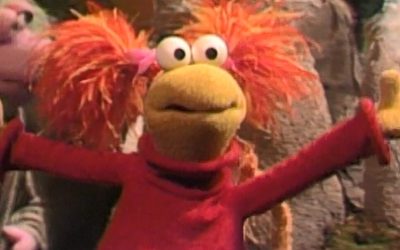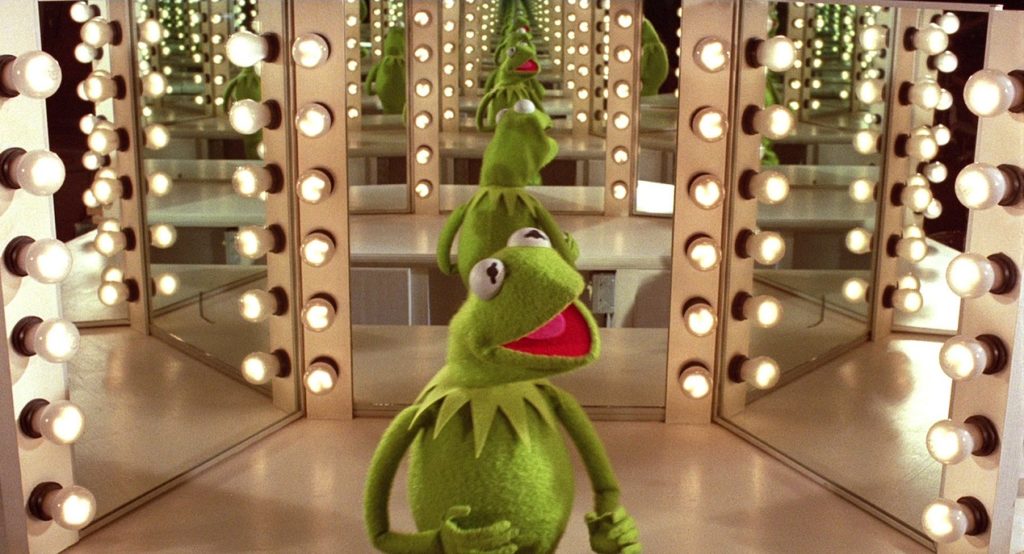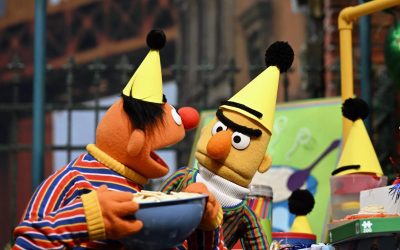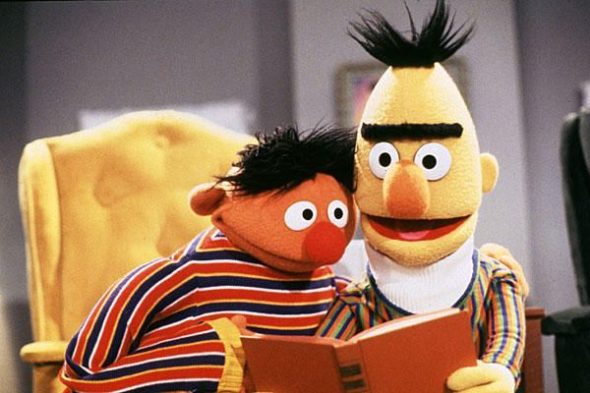
Since the very early days of the TV show Sesame Street, there’s been tie-in merchandise, and a huge percentage of that merchandise has consisted of Sesame Street books.
Muppet Wiki currently lists 1,575 titles in its “Sesame Street Books” category. Wow! That’s so many books that if you stacked them all on top of each other… you would have a REALLY tall stack.
Here’s a question: What’s the quintessential Sesame Street book? Which of those 1,575 volumes should be considered the “Most Classic?” Well, despite all those choices, I have a feeling we could pretty easily reach something resembling a consensus. The “most classic” Sesame Street book is this one:
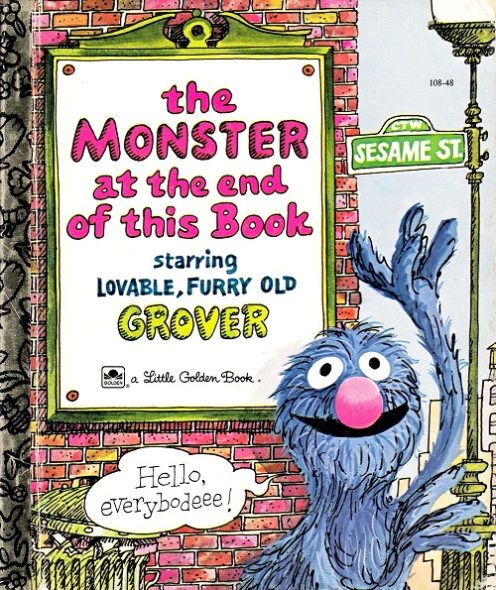
Since it was published in 1971, The Monster at the End of This Book has been a childhood favorite of millions. At this point, it’s not just a classic Sesame Street book. It’s one of the all-time classic children’s books, period. Actually, you know what? Forget the period. Make that an exclamation point!
The book was written by Jon Stone, but the credits inside also note that Grover is performed by Frank Oz on the TV show. I don’t know if that was a contractual stipulation or what, but it feels important. So much of Grover’s personality that’s captured in the book comes from Frank’s vibrant and hilarious performance. And the illustrations by Michael Smollin perfectly depict lovable, furry old, amusingly high-strung old Grover.
The Monster at the End of This Book reflects the best of classic-era Sesame Street: It’s innovative, telling its story in an offbeat interactive way. It’s a laugh riot, and kids (and grown-ups) can experience it over and over without getting tired of it. And it’s… educational? I guess? It teaches kids how to turn pages of a book. And how to come to terms with the fact that the scariest thing we can imagine is just… ourselves. I think those are the lessons, anyway.
The book has also been adapted into a number of different formats, and even an animated TV special. It’s the best-selling Sesame Street book. And of course, it’s the reason that a huge number of people have happy memories of their parents reading to them in a Grover voice. What could be more important than that?
So that’s decided. The Monster at the End of This Book is the Most Classic Sesame Street Book. But here’s a tougher query: What’s the Second-Most Classic Sesame Street Book?
When I ponder the question, two titles immediately spring to mind: The Great Cookie Thief (written by Emily Perl Kingsley and illustrated by Michael Smollin) and The Ernie & Bert Book (written by Norman Stiles and illustrated by Joe Mathieu).

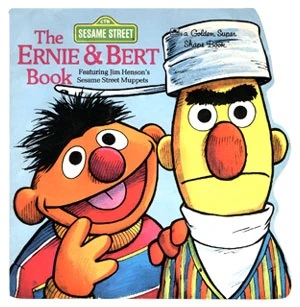
The Great Cookie Thief is a tale of law and order, deception and mustaches. The Ernie and Bert Book is a tale of actions and consequences, unconventional problem-solving, and wearing a pot on your head. They’re both lots of fun, and they both have terrific “punchlines” at the end of their stories.
But here’s the thing: They’re both based on Muppet sketches from the TV show. One of the brilliant things about The Monster at the End is that it translates the vibes of a Grover sketch to print form without directly duplicating an existing sketch. I would have reservations about giving these adaptations that Second-Most Classic honor.
So let’s continue our search. And let’s do that by digging around in the TRASH!
By which I mean, let’s consider Oscar’s Book, a childhood favorite of mine. It was written by Jeff Moss, and illustrated by Michael Gross (presumably not the dad from Family Ties. But what an appropriate name for the illustrator of an Oscar the Grouch book!).
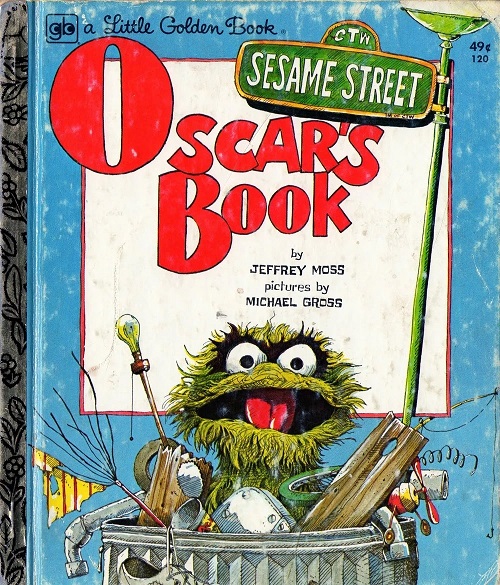
Oscar’s Book is similar to The Monster at the End in that it features Oscar speaking directly to the reader. And like Grover, Oscar is frustrated that we’re not abiding by his requests. But where Grover desperately wanted us to stop dragging the book toward its terrifying ending, Oscar just wants us to leave him alone. He wants us to ignore him and stop reading his book altogether.
It’s a fun one, and I’m pretty sure my preschool self took just as much delight in infuriating Oscar as I did in torturing Grover. And yet… I don’t think Oscar’s Book is nearly as well known as The Monster at the End of This Book, so it might not qualify for a spot on the top shelf. Also, I just noticed that Muppet Wiki’s page for the book says it was adapted from two episodes of the show, which also gives me pause. So what else is out there?
There’s Big Bird’s Red Book, written by Rosanne and Jonathan Cerf and illustrated by our old pal Michael Smollin.
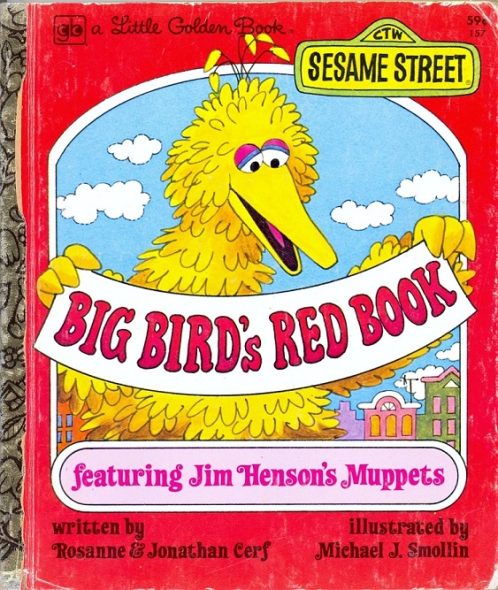
I know a lot of kids grew up with this one, although I must confess I don’t have much of an attachment to it. I never owned a copy, and I guess I didn’t encounter it much as a tiny tot.
Like some of those aforementioned books, it has Big Bird speaking directly to the reader, which is nice. On the TV show, the Muppets (and the humans) spend a lot of time talking directly to the kids at home, so there’s something about that format that makes those books feel cozy and familiar.
Big Bird is a pleasant character, and I love him, but I don’t think he’s quite as laugh-out-loud funny as Grover, Cookie Monster, Ernie, and Bert. So while it’s fun watching him attempt to find something red to show us, I don’t know that it reaches the heights of — or has the re-readability of — those others.
So let’s go back to Grover for a minute. I can think of three other Grover books that I would also consider for the title of Second-Most Classic.
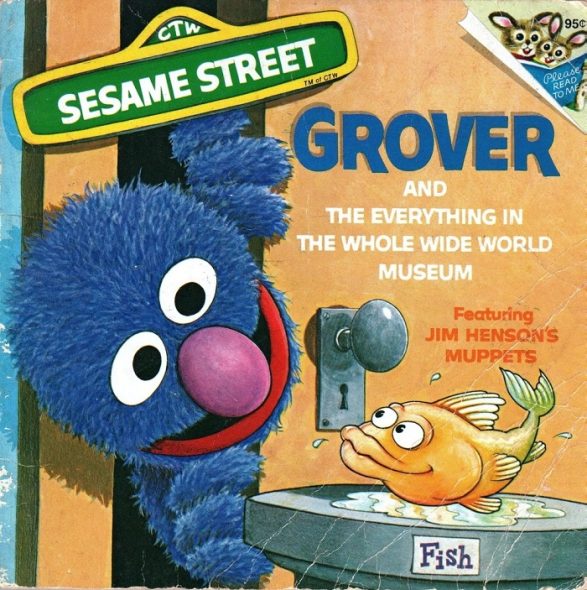
Grover and the Everything in the Whole Wide World Museum (by Norman Stiles and Daniel Wilcox and illustrated by Joe Mathieu) checks the “Muppet talks to the reader” box. It teaches lots of concepts — height, weight, weather — and frames them all within an overall lesson about putting things in categories.
It’s also really funny, and even though there’s not much of a narrative, it’s a great Grover story: He wants to gives us a tour of the titular giant museum, there are a few unexpected hurdles, and he tries really hard to get past them. The whole thing feels like something they would do on the TV show if they weren’t limited by practical and budget concerns. It’s a true masterpiece of Sesame Street literature.
Then there’s Grover’s Own Alphabet, with illustrations by Sal Murdocca. (And no credited author? That’s curious.)
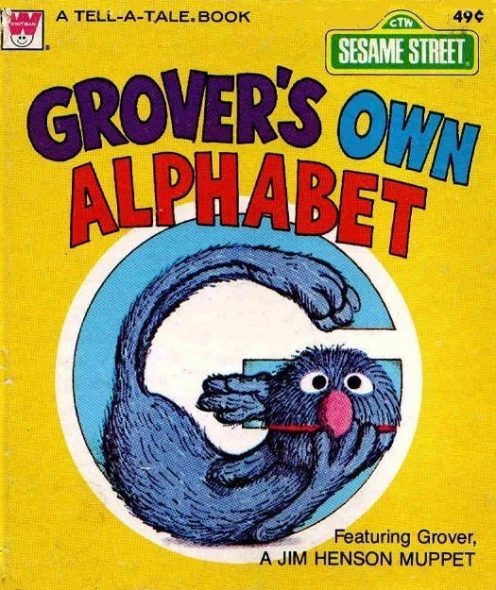
This time, Grover demonstrates his dedication to his educational mission by painfully contorting his body into all the letters of the alphabet. This leads to some visual comedy that would be difficult for the puppet Grover to ever do. I just hope none of the kids at home tried to emulate him and ended up with life-long posture problems.
There’s also Would You Like to Play Hide & Seek in This Book With Lovable, Furry Old Grover?, which reunites Jon Stone and Mike Smollin.
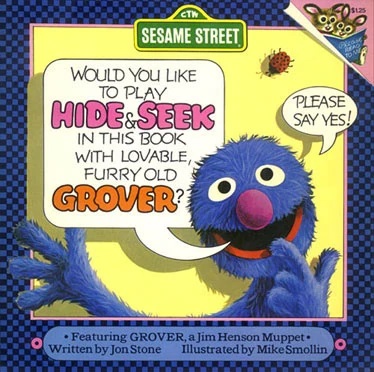
This one might just earn the title of Sesame Street Book With the Longest Title. Once again, Grover is talking to us. Once again, the creative team uses the book format in clever ways, as Grover valiantly tries to hide from us within the confines of the pages. This is essentially a spiritual sequel to The Monster at the End of This Book.
Which reminds me! There’s an actual sequel to The Monster at the End of This Book. It was published in 1996, brought Stone and Smollin back together, and featured the show’s hottest star of the moment: Monty!
Wait, no, sorry. It was Elmo. The book is called Another Monster at the End of This Book.
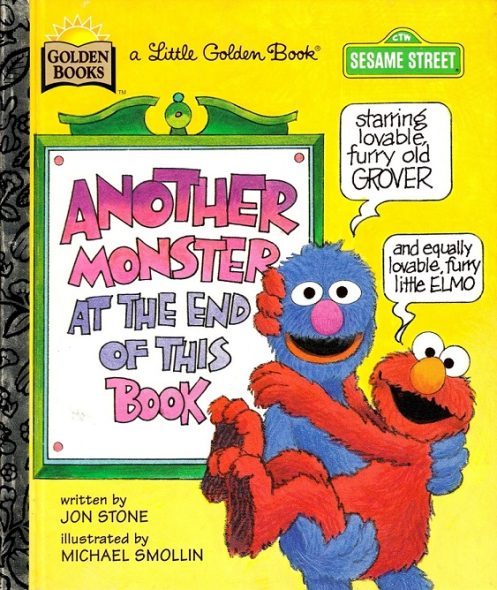
It’s a lot like the first one, but this time Elmo is encouraging the reader to turn the pages, as Grover, who apparently didn’t learn his lesson, strives to cease the inevitable march toward the book’s conclusion.
I’m sure a lot of children have grown up with this one and loved it just as much as the original. And yet, it feels odd considering a book from the ’90s for the title of Second-Most Classic, because while those older books were cherished by the kids of the ’70s, ’80s, ’90s, and beyond, the more recent books haven’t had quite the same generation-transcending reach.
But that’s probably short-sighted of me! I have no doubt that somewhere out there, there are some young adults now who grew up reading a book about Elmo and Abby, and they love it just as much as I love all of those Grover books. So maybe one of those deserves the spot.
On the other hand, there’s an undeniable charm to the lesser-known, offbeat early books, like past Tough Pigs Book Club entries The Together Book and Bert’s Hall of Great Inventions. So maybe one of those deserves the spot! And now I’m thinking of other titles… It’s No Fun to Be Sick… The Amazing Mumford Forgets the Magic Words… Bert and the Missing Mop Mix-Up… Grover’s Kitten… There are so many!
This is tough! So now, like Grover talking to his readers, I’ll pose the question to YOU: What book deserves the title of Second-Most Classic Sesame Street Book? It doesn’t have to be one of the ones I’ve named. It can be any Sesame Street book. And if you want to let me know why, you can do that too.
Let me know by submitting your answer in this Google Form! I’ll be accepting responses until the end of the day on Friday, September 22, 2023!
I’ll post a follow-up soon to let you know which book was chosen by the masses. Stay tuned!
Click here to turn the page to the Tough Pigs forum!
by Ryan Roe – Ryan@ToughPigs.com

